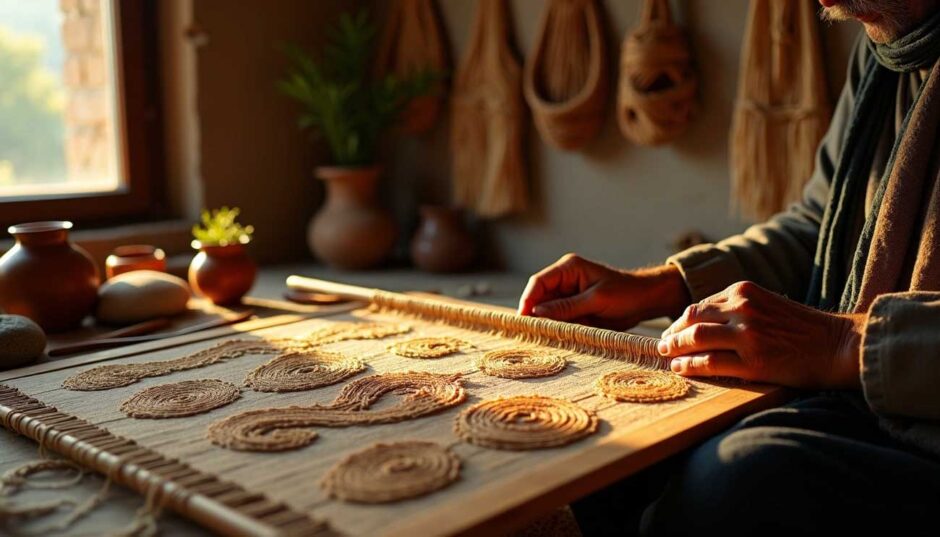What Is Hitaar? The Hidden Story Behind 2025’s Mystery Word

The term “hitaar” stands out as 2025’s most intriguing linguistic mystery. Curious minds on search engines, forums, and blogs have been buzzing about it in recent months. People keep asking the same question: what does this enigmatic term really mean?
The term carries layers of meaning and cultural significance that make it fascinating to anyone interested in language and tradition. You won’t find it in major dictionaries, and most people can’t immediately grasp its meaning. The mystery itself seems to spark public interest – people naturally want to explore deeply when a word has an aura of enigma around it.
“Hitaar” has built strong connections to cultural traditions, personal identity, and creative breakthroughs over the years. No single source claims its origins, but historical records show its use in rituals that promoted community bonds. The word’s imagery often features water and earth elements that symbolize nourishment and growth.
This piece explores deeply the hidden story behind “hitaar” – from its cultural roots and symbolic significance to its traditional expressions and surprising modern revival in our digital world.
The Cultural Roots of Hitaar
The word “hitaar” holds a cultural importance that ever spread beyond its basic meaning. Communities of all sizes view hitaar as more than just a word—it embodies storytelling traditions, spiritual expression, and social bonds that generations have preserved.
Early mentions in folklore and oral traditions
Rural communities placed hitaar at the heart of their culture. Wandering musicians and minstrels used it with folk songs to tell stories of love, heroism, and daily life. The instrument became a vital part of weddings and festivals, weaving a continuous thread through cultural celebrations. Religious and Sufi traditions made hitaar part of devotional music like qawwalis and bhajans. Its resonant tones created a meditative atmosphere that helped spiritual reflection.
Possible linguistic origins and meanings
Arabic linguistics reveals hitaar’s roots, where it means “cap” or headgear. This definition suggests metaphors of shelter, guardianship, and modesty. Urdu script renders the name as حتار and supports its basic meaning as a protective covering. String instruments share an interesting connection to Sanskrit and Persian languages, where “tar” means “string”. Musicians named their instruments by adding prefixes that showed the number of strings—this gives us another origin story to think over.
Regional variations and interpretations
South Asia and the Middle East’s communities have shaped hitaar’s meaning uniquely while keeping its cultural core. Some groups see it as a symbol of protection, modesty, and spiritual guidance—qualities that mirror wearing a protective cap. Muslim communities use this term moderately, which gives them distinctiveness while honoring tradition. Europe’s late 19th century saw cultural identity movements grow stronger. People celebrated their shared heritage through folklore, handicrafts, and local traditions. This cultural revival mirrors how different regions have kept and adapted terms like hitaar, each adding their special meaning to this culturally rich concept.
Symbolism and Deeper Meaning
Hitaar carries deep symbolism that connects people with nature and each other. This rich cultural element bridges generations both physically and spiritually.
Connection to nature and balance
Hitaar’s essence lies in humanity’s relationship with the natural world. The movements in hitaar performances represent water, earth, and air. These natural forces do more than just serve as symbols – they’re thought to shape life’s cycles and rhythms. The connection to nature comes by design, promoting environmental harmony long before modern ecological movements began.
Use in rituals and spiritual practices
Hitaar rituals often include offerings to deities and ancestral spirits. People use incense or food items to show respect and gratitude during ceremonies. Hitaar creates an experience that surpasses everyday life. The rhythmic sounds in hitaar ceremonies appeal to participants deeply. This creates a spiritual atmosphere that helps people contemplate and bond with their community.
Colors, elements, and their significance
Colors are crucial to hitaar traditions. Different shades represent various emotions and seasons. These color associations improve the experience for everyone involved. The natural elements in hitaar – water, earth, and air – each hold unique symbolic meanings about sustenance, foundation, and freedom. The practice becomes an array of meaningful symbols.
Hitaar as a symbol of unity and identity
Hitaar stands as a powerful symbol of collective identity. People who share hitaar experiences develop a sense of belonging that surpasses their differences. These ceremonies bring communities together and remind them of their shared heritage and values. This community aspect matters even more today. Hitaar gives people a strong link to their cultural roots while building connections between groups of all backgrounds.
Traditional and Artistic Expressions
Hitaar shows its cultural importance through art forms that have evolved and stayed alive for centuries. These expressions work as cultural archives and living traditions that shape community identities.
Hitaar in dance and performance
Hitaar performances celebrate the deep connection between movement and natural elements. The dance form stands apart from modern styles by using two-dimensional representations that separate main elements by size rather than viewpoint. Dancers wear specific costumes with geometric shapes and vibrant colors to represent different parts of their cultural heritage. The performances follow a well-laid-out process. Artists start with sketches, prepare the background, and add intricate details. They finish by adding gold embellishments outlined in red to enhance the visual effect.
Craftsmanship and handmade artifacts
Hitaar craftsmanship stands as one of the clearest examples of intangible cultural heritage. The true value goes beyond the artifacts themselves to the knowledge and skills passed down through generations. These crafts include everything from delicate, detailed work to reliable, practical items that serve both everyday and spiritual needs. Artisans dedicate years to perfect techniques that often include “trade secrets” kept within families or communities. Today’s craftspeople create these handmade objects to balance mass production, creating pieces that carry cultural values and personal creativity.
Storytelling and generational knowledge
Ancestral storytelling serves as the foundation of hitaar cultural transmission. Elders stress the need to share traditional tales with younger generations to keep essential knowledge alive. These stories carry practical wisdom about ancestral life and help build stronger community bonds. They work as powerful teaching tools that help children grow confident and understand their heritage better. This exchange benefits everyone – older members take pride in sharing their culture while younger ones deepen their connection to their roots.
Modern Revivals and Global Reach
Hitaar has undergone a remarkable renaissance over the last several years that exceeds its traditional contexts and finds new expression in contemporary global culture.
Hitaar in fashion and design
Contemporary designers merge hitaar elements with current fashion trends to create unique pieces. The term’s phonetic appeal and cultural depth make hitaar a popular brand choice in a variety of industries that symbolizes creativity and modernity. Hitaar’s influence reaches into architecture and daily rituals where traditional aesthetics blend with contemporary design principles.
Wellness and mindfulness communities
Hitaar serves as inspiration for many mindfulness practices, wellness retreats, and sacred spaces that emphasize balance and inner peace. These communities value hitaar’s focus on harmony and connection to nature – principles that matter more than ever in our ever-changing world.
Social media and digital storytelling
Social media platforms have revolutionized hitaar’s reach. Short videos of performances now fascinate global audiences way beyond traditional boundaries. Digital storytelling lets hitaar practitioners share their knowledge through interactive content that connects with viewers from different cultural backgrounds.
Workshops and international collaborations
Global workshops welcome participants from diverse backgrounds to experience hitaar practices firsthand. These shared environments promote cross-cultural understanding while preserving essential traditions. Leadership training programs often include hitaar principles to emphasize collaboration and consensus-building.
Risks of cultural dilution and misuse
Hitaar’s growing popularity raises concerns about cultural appropriation. The practice risks becoming merely decorative without proper understanding of its cultural context. Many communities have started developing ethical frameworks to ensure respectful engagement with these traditions.
Conclusion
Hitaar represents a remarkable cultural phenomenon that connects ancient traditions with modern expressions. This enigmatic term has grown from its original roots in headwear and musical traditions to become a powerful symbol of identity, spirituality, and artistic expression. What started as a mysterious concept now represents something much more meaningful – a living bridge between generations and cultures.
Hitaar’s deep connections to natural elements show humanity’s lasting relationship with water, earth, and air. These connections matter just as much today as communities worldwide try to find balance with advancing technology. Dance, craftsmanship, and storytelling around hitaar help preserve valuable knowledge that could otherwise disappear.
The way hitaar adapts while keeping its core meaning shows the resilience of cultural traditions. Fashion designers, wellness experts, and digital storytellers now use hitaar principles, spreading its influence way beyond its geographic origins. This worldwide reach raises valid concerns about cultural appropriation and dilution. Communities need ethical guidelines to ensure people participate respectfully with hitaar traditions.
Looking ahead to 2025, hitaar works as a mirror to our past and a window to possible futures. The mystery that first drew public interest has become something more precious – a shared cultural heritage that shows how ancient wisdom stays relevant in our fast-changing world. Hitaar gives us more than just an interesting linguistic puzzle – it shows how traditions can grow through respectful development and adaptation.
FAQs
Q1. What is the origin and meaning of the word “hitaar”? Hitaar has roots in Arabic linguistics, where it literally translates to “cap” or headgear. It carries metaphorical implications of shelter, guardianship, and modesty. The word has evolved to represent cultural traditions, personal identity, and creative innovation across various communities.
Q2. How is hitaar expressed in traditional art forms? Hitaar is expressed through various artistic forms including dance, craftsmanship, and storytelling. Dance performances often incorporate costumes with geometric shapes and vibrant colors, while craftsmen create both delicate and robust artifacts that serve functional and spiritual purposes. Storytelling plays a crucial role in passing down hitaar-related knowledge between generations.
Q3. What symbolic significance does hitaar hold? Hitaar symbolizes a deep connection to nature and balance. It’s associated with elements like water, earth, and air, each carrying distinct meanings related to sustenance, foundation, and freedom. Hitaar also serves as a powerful emblem of collective identity and unity, bringing people together through shared cultural experiences.
Q4. How has hitaar adapted to modern times? In recent years, hitaar has experienced a renaissance in contemporary culture. It has been integrated into modern fashion and design, inspired wellness and mindfulness practices, and found new expression through social media and digital storytelling. International workshops and collaborations have also helped spread hitaar practices globally.
Q5. Are there any concerns about the growing popularity of hitaar? As hitaar gains popularity, there are concerns about cultural appropriation and dilution. Without proper understanding of its cultural context, there’s a risk of hitaar becoming merely decorative rather than meaningful. Many communities are developing ethical frameworks to ensure respectful engagement with these traditions while preserving their essence.


